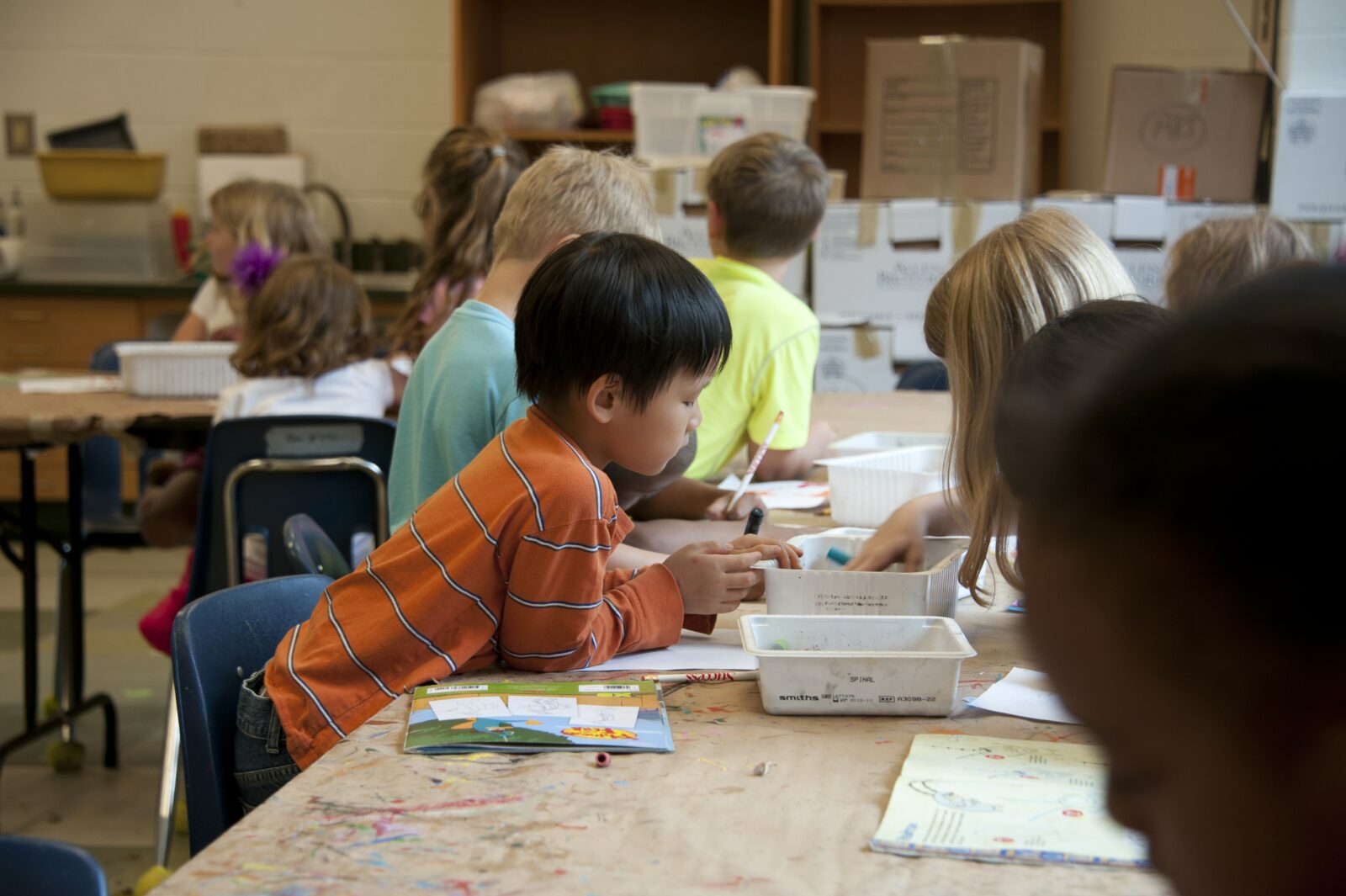Group and educator level
Socially disadvantaged contexts: Additional challenges and resources?

“I think (…) that children are always challenging (…) everything we do here in preschool is very important to them”. These were statements by a teacher with whom we talked about the challenges and opportunities of working with different groups of children.
Working with any group of children is challenging! But are these challenges similar in all contexts? Do preschools in socially disadvantaged contexts have the resources to satisfy the needs of all children?
In earlier messages, we addressed the importance of high-quality early childhood education for children’s positive development. In this message, we reflect about the association between classroom composition and quality in early childhood education (ECE).
Is there a relationship between classroom composition and early childhood education quality?
First, there are still few studies about this association [1], although the potential implications for the organization of groups and for the educational practices of teachers are recognized. Nevertheless, some studies conducted in the United States and in Europe suggest that, in classrooms with a high number of children from socially disadvantaged backgrounds, quality tends to be lower [1]. In this case, children in sociocultural disadvantaged are those who live in poverty, with a migrant background or minority status, and children who speak a different language from the majority.
Considering that only high-quality early childhood education can produce positive effects on children´s cognitive, linguistic, social, and emotional development [2], these results raise concerns that the potential benefits may not be reaching the children most in need [1].
What can explain this negative association?
“This is a diamond in the rough. (…) This type of groups are completely challenging in every way. (…) in terms of behavior, in terms of rules, in terms of personal and social training”. These were statements by a teacher with whom we talked about the challenges of working with children in socially disadvantaged contexts.
Children who live in situations of sociocultural disadvantaged can be exposed, in their close environments, to constraints that impair their social and behavioral development and increase their risk of experiencing emotional and behavioral difficulties [3]. Simultaneously, some international research suggests that programs located in disadvantaged communities tend to have access to fewer resources and to receive less experienced/qualified teachers [4]. In these cases, without the adequate resources and supports, teachers’ abilities to effectively manage the group and to promote high-quality interactions may be diminished [5].
However, there are exceptions that can teach us important lessons. For example, some programs in the US specifically targeting disadvantaged children have shown high-quality interactions and curriculum [6]. Further, there are European countries where disadvantaged children seem to experience higher early childhood education quality, due to a strong targeted approach (e.g., the Netherlands) or to a strong public sector (e.g., Portugal) [7].
How to assure high-quality interactions in classrooms with a high number of children in sociocultural disadvantage?
Classroom quality in socially disadvantaged contexts can be promoted in multiple ways, including:
- Interactions based on emotional support – positive affect and respectful interactions; attention and responsiveness to the emotional and learning needs of children; learning opportunities guided by children’s interests [8].
- Communication of clear behavioral expectations to children in each activity; proactivity and redirections of challenging behaviors, based on the reinforcement of positive behaviors and the use of subtle cues [8].
- Professional development opportunities for teachers – can be more or less formal (e.g., mentoring, supervision/intervision, consulting, team work) [9].
- Reinforcement of the number and training of educational assistants [9].
- Allocation of more experienced teachers [5] and of those recognized by their high-quality educational practices, that promote the development of transversal skills in children and help to reduce achievement gaps [8].
What resources do programs and teachers need to manage classrooms with a high number of children in situations of sociocultural disadvantage? Please, share with us your experiences and perspectives.
This post was contributed by Ana Lúcia Aguiar, ISCTE-Instituto Universitário de Lisboa
References
[1] Aguiar, A. L., & Aguiar, C. (2020). Classroom composition and quality in early childhood education: A systematic review. Children and Youth Services Review, 115, 1-26. doi: 10.1016/j.childyouth.2020.105086 [2] Helburn, S. W., & Howes, C. (1996). Child care cost and quality. The Future of Children Financing Child Care, 6(2), 62-82. [3] Buyse, E., Verschueren, K., Doumen, S., Van Damme, J., & Maes, F. (2008). Classroom problem behavior and teacher-child relationships in kindergarten: The moderating role of classroom climate. Journal of School Psychology, 46, 367–391. doi:10.1016/j.jsp.2007.06.009 [4] Knight, D. S. (2017). Are school districts allocating resources equitably? The every student succeeds act, teacher experience gaps, and equitable resource allocation. Educational Policy, 33(4), 615-649. doi: 10.1177/0895904817719523. [5] Ansari, A., & Pianta, R. C. (2018). The role of elementary school quality in the persistence of preschool effects. Children and Youth Services Review, 86, 120–127. doi:10.1016/j.childyouth.2018.01.025 [6] Dotterer, A. M., Lowe, K., & McHale, S. M. (2014). Academic growth trajectories and family relationships among African American youth. Journal of Research on Adolescence, 24(4), 734–747. doi: 10.1111/jora.12080 [7] Slot, P., Lerkkanen, M.K., & Leseman, P. (2015). The relations between structural quality and process quality in European early childhood education and care provisions: Secondary analyses of large scale studies in five countries. D2.2. Curriculum Quality Analysis and Impact Review of European ECEC, CARE. Retrieved from https://ecec-care.org/fileadmin/careproject/Publications/reports/CARE_WP2_D2__2_Secondary_data_analyses.pdf [8] Pianta, R. C., La Paro, K. M., & Hamre, B. K. (2008). Classroom Assessment Scoring System Manual: Pre-K. Baltimore, MD: Brookes. [9] Tonga, F. E., Eryiğit, S., Yalçın, F. A., & Erden, F. T. (2019). Professional development of teachers in PISA achiever countries: Finland, Estonia, Japan, Singapore and China. Professional Development in Education, 1-17. doi: 10.1080/19415257.2019.1689521 [10] Kuger, S., Kluczniok, K., Kaplan, D., & Rossbach, H. G. (2016). Stability and patterns of classroom quality in German early childhood education and care. School Effectiveness and School Improvement, 27(3), 418–440. doi:10.1080/09243453.2015.1112815You must be logged in to post a comment.
